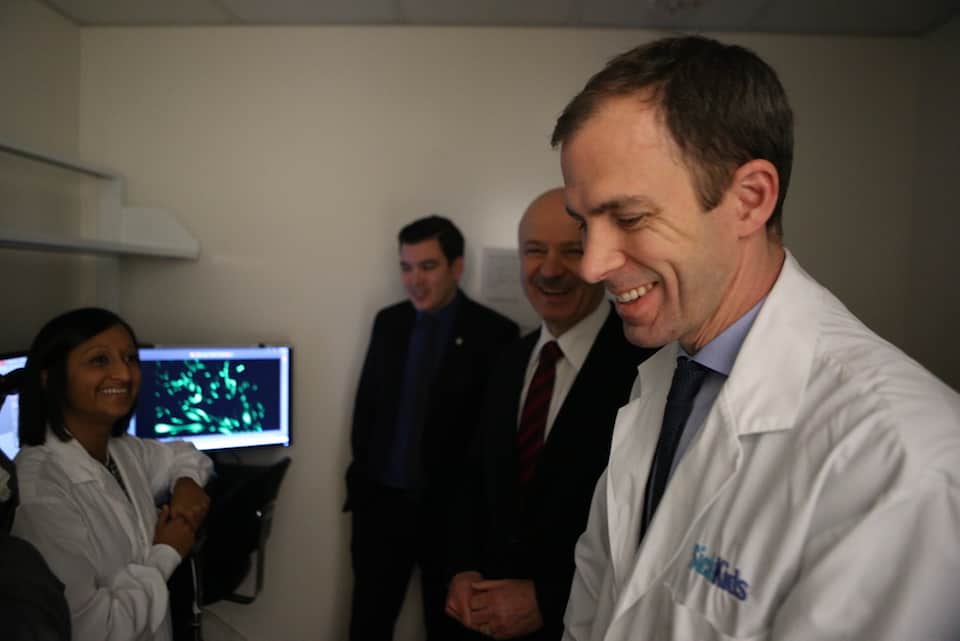In 1961, Toronto researchers verified the existence of stem cells. Now, in 2016, a Canadian ‘Dream Team’ of researchers assembles to tackle cancer stem cells.
Announced on World Cancer Day, Dr. Peter Dirks, a neurosurgeon at the Hospital for Sick Children and a professor in the departments of surgery and molecular genetics at the University of Toronto, will lead this $11.7 million initiative funded by Stand Up to Cancer (SU2C), among other organizations.
Co-led by Dr. Samuel Weiss, director of the Hotchkiss Brain Institute at the University of Calgary, the team brings together scientists across Canada in a collaborative approach to make a difference for children and adults with brain cancer.
“The [goal of this] project is to understand brain cancer from a cancer stem cell perspective,” says Dr. Gary Bader, a Dream Team principal investigator of the Donnelly Centre for Cellular and Biomolecular Research. “The best treatments [currently] are not very effective. They do extend your life by…a few months.”
The Dream Team is dedicated to translational research, which aims to move discoveries from the lab and implement them in medical practices by bringing new treatments for brain cancer into clinical trials.
The primary targets are cancers known as glioblastomas and ependymomas, both of which are types of brain tumours. Less than 10 per cent of adults with glioblastoma survive for five years after diagnosis, and brain tumours are now the leading cause of death in children with cancer.
When healthy, stem cells in the brain will develop into normal nerve cells. Certain stem cells with deleterious changes, on the other hand, can become cancerous. These cancerous stem cells can regenerate tumours even after surgery and therapy. Many cancerous stem cells will resist drug treatments as well.
The researchers intend to approach this challenge in three ways: first they will conduct a detailed analysis of brain tumour stem cells to better understand the biological profile of these cells. Then, they will explore new drug combinations through a careful screening of chemicals. Finally, the team will test five promising drugs in clinical trials that may potentially be the solution to glioblastomas and ependymomas.
Dr. Amy Caudy, a professor in the department of molecular genetics and Canada Research Chair in Metabolics for Functional Enzyme Discovery, is a Dream Team principal investigator. As part of the interdisciplinary approach against brain cancer, her team is investigating the links between cancer cells and metabolism, specifically a metabolite (a chemical produced in the body during digestion) called 2-hydroxyglutarate (2HG).
“[2-HG is] very central to the pathogenesis of at least some of these glioblastomas,” says Dr. Caudy, emphasizing the disease-triggering abilities of 2-HG. “People are now using it as a biomarker for [the] progression and status of glioblastomas and also some other cancers.”
With project leaders Dr. Dirks, who first discovered brain cancer stem cells, and Dr. Weiss, who received the Canada Gairdner International Award for discovering adult neural stem cells, the team of fourteen researchers stand up to cancer. Together, the Dream Team continues Canada’s legacy in stem cell research.


